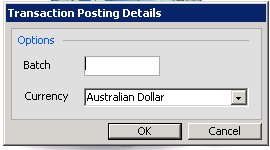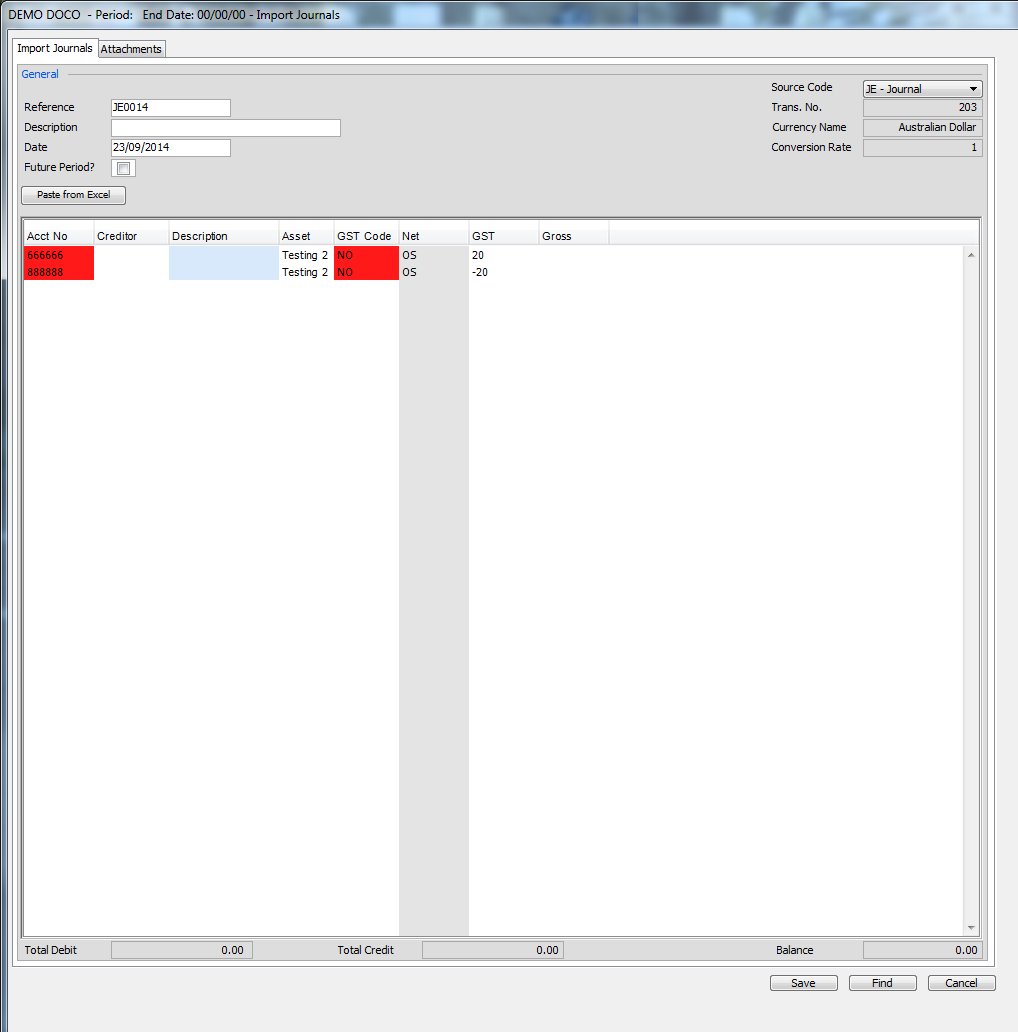To enter a new journal from Excel, select ‘Import Journal’ from the ‘Journals’ menu as shown below.

You can also open this form from the following toolbar icon.

This will firstly open the currency selection screen, where you can select in which currency this journal will be entered in.

If batches are in use, you will see

From here you can select which batch this transaction will be linked with. For more information on the behaviour of the batch field please click here
The import journal screen will now display as shown below.

Above the grid are several fields that relate to the journal as a whole, a reference to refer to the journal, a description, the journal date, what type of journal (Journal/Bank payment/Deposit-Receipt/Electronic Transfer or Wire Transfer), and a tick box to select whether the journal should only be included in the ledger after the next period reset. The transaction number and currency information is shown in the top right hand corner as well.
As usual any fields shown in blue are mandatory, and the form cannot be saved until text has been entered in these fields.
Next copy your journal entries from Excel using ‘Edit’ – ‘Copy’ (inside of Excel), or instead use your operating system shortcuts (Ctrl-c for PCs, or Command-c for MACs). Then come back to mydaEs and press the ‘Paste from Excel’ button. The information will now be visible onscreen in the grid.
Below is an example after the ‘Paste from Excel’ button is pressed. Moneypenny attempts to validate your entries, and if any entries fail validation, they will be shown in red. Any fields that are mandatory but not yet filled in, will be shown in blue. The entry will not be able to be saved until these are corrected.

Please click on the image to view it full screen, then the back button to return.
The columns shown onscreen will change depending on the requirements in your project. You may see a creditor or vendor field to enter in the code for the related creditor/vendor. You may see a location and/or set field. There can also be a free field and 1099 code field as well. If GST or VAT has been selected for this currency, you will also see a GST/VAT Code field as well as the money fields which change to display Net/GST(VAT)/Gross rather than just an amount field. Most of these fields have look-up forms behind them to assist your data entry. You can just type in the start of what needs to be entered and tab out of the field to either bring up the look-up screen to assist you during data entry.
You can right click any line in the grid to bring up 3 extra options to either add in another line, delete the current line or clear all entries in the grid to start again.
At the bottom of the screen you can press the ‘Find’ button to bring up the ‘Find Transactions’ report or press the ‘COA’ button to bring up the chart of accounts look-up screen (which can be turned off for a particular user in the ‘Users’ setup menu). For more information on the behaviour of the COA button click here. For more information on the users setup menu click here
At the top of the screen is an ‘Attachments’ tab, where you can manually link documents to this journal. The documents are then saved in mydaEs for viewing/retrieval later, rather than keeping paper files.

You can press the add button and then locate the document/s you wish to attach. You can also drag and drop the files direct from ‘Computer’ on your PC or ‘Finder’ on your MAC. You can also choose to then view/export or delete the attachments you have imported.
